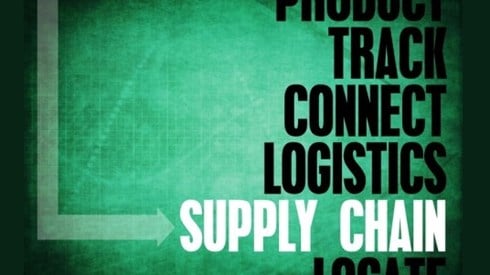Pandemic Disruptions Highlight Need for Supply Chain Resilience

November 11, 2020

As the world grapples with new spikes of the COVID-19 pandemic, it's important to consider the disruptions such global crises can cause to organizations' supply chains.
The COVID-19 pandemic created severe disruptions for many organizations' supply chains, and it's likely that a similarly disruptive event will occur in the future.
Despite some previous events like the H1N1 pandemic in 2009, "global pandemic risk was totally underestimated" in many organizations, said Jerome Avot, group risk officer and data protection officer at global automotive technology supplier Faurecia in France.
"We will for sure face this kind of crisis again," Mr. Avot said, noting that the next global crisis disrupting supply chains might not be a pandemic but instead a cyber war, major floods resulting from climate change, or a geopolitical issue.
Mr. Avot and others offered their views on COVID-19's impact on supply chains during a session titled "Supply Chain Exposure: How Has the COVID-19 Pandemic Changed the Global Picture?" during the Federation of European Risk Management Associations (FERMA) virtual 2020 European Risk Management Seminar.
Milan, Italy-based risk management and business continuity consultant Federica Livelli noted that today's business world is marked by vulnerability, uncertainty, complexity, and ambiguity. Against that backdrop, the COVID-19 pandemic revealed the vulnerability of many organizations' supply chains.
"We know that our world is a riskier place now with COVID and all the other risks emerging from this crisis scenario," Ms. Livelli said. "Organizations need to put in place the necessary supply chain capabilities in order to manage risks and to mitigate them in order to construct supply chain resilience."
In recent decades, many organizations focused more on cost and the efficiency of supply chains without asking what might go wrong and considering how they might mitigate disruptions, she said. COVID-19 has shown, however, that "this is the very moment to understand that we need to know our supply chains."
Organizations that work to understand themselves and the outside world can also understand the vulnerabilities in their supply chains and address those weaknesses, Ms. Livelli said. Doing so involves looking beyond just cost and efficiency and instead taking a more holistic view of the supply chain, she said, including mapping the entire supply chain and where the risks are.
Supply chain mapping can provide insight into the location of all suppliers. And all participants in the supply chain must be transparent in the process, Ms. Livelli said. "The more you know, the more aware you are of the vulnerabilities, the risks that might hit your supply chain," she said.
Among the aspects organizations should consider are country dependencies, the inability to predict events like the pandemic and subsequent lockdowns, instances of asynchrony of supply and demand, the need for additional stock, and the possible need to comply with more stringent regulations. And businesses need to understand where stock is located and how to deal with increases or decreases in demand, Ms. Livelli said.
"In this respect, implementation of risk management and business continuity may help us in reaching the desired resilience," she said.
On one side is the business continuity discipline, which has to do with dealing with the consequences of a disruptive event, Ms. Livelli said. By properly implementing business continuity practices, businesses can respond quickly to a disruptive event and limit the damages.
On the other side is the risk management discipline, which has to do with identifying, measuring, and mitigating the impact of the possible risk event, she said. Risk management aims to address exposures through physical risk control and risk financing.
Ultimately, the business continuity and risk management disciplines are complementary, Ms. Livelli said. "They are two sides of one coin."
Mr. Avot stressed the emphasis on an enterprise risk management and a business continuity management culture within organizations. "The risk management and the business continuity management culture need to be part of your organization," said Mr. Avot. He noted that with any decision, organizations should consider the potential risk impacts and what could go wrong.
"Adequate risk management practices are indeed very important when it comes to protecting companies' supply chains or to make supply chains resilient," said Pascal Matthey, marine risk consulting manager at AXA XL. "Most companies haven't really been as prepared (for the impact of the COVID-19 pandemic) as they should have been."
In the current pandemic, "for the first time, everyone and everything have been hit more or less at the same time," Mr. Matthey said. "That's really something we haven't faced before."
In implementing the risk management and business continuity disciplines to manage supply chain risk, it's necessary to identify which suppliers should be monitored across the various tiers of the supply chain. "You need to know your supplier and also the supplier of your supplier," Ms. Livelli said.
Organizations also should identify risk indicators, she said, and conduct an impact analysis that includes reviewing suppliers' inventories and identifying items at risk, she said.
Organizations that have taken steps to make their supply chains more resilient to future disruptive events can potentially benefit by encouraging insurers to audit their supply chain management plans and practices in order to keep premiums down, Ms. Livelli said.
To survive future supply chain crises such as those caused by COVID-19, it's necessary to create more resilience, Mr. Avot said, something that's easy to say but harder to do. Organizations must be agile, he said, and that resilience should be developed by design whenever an organization creates a new process or engages a new supply chain source.
November 11, 2020


